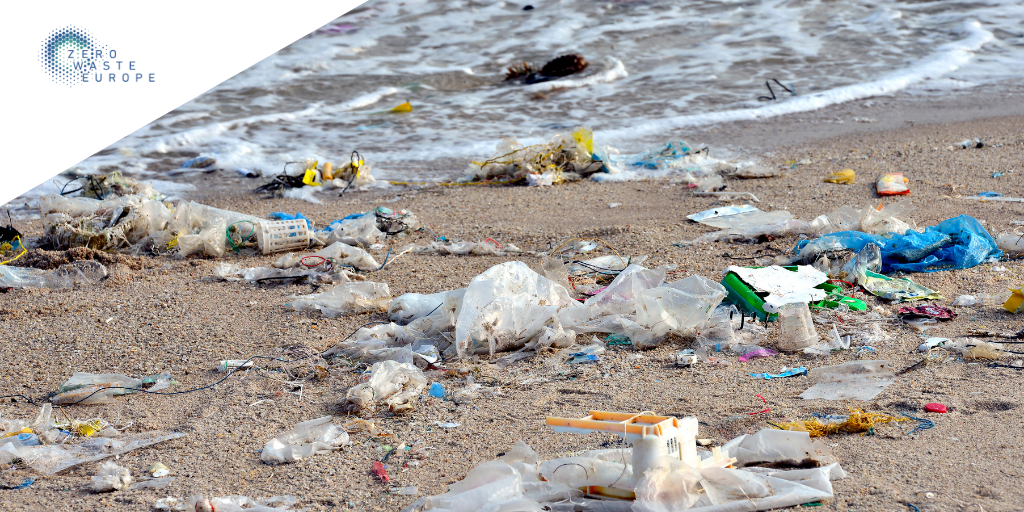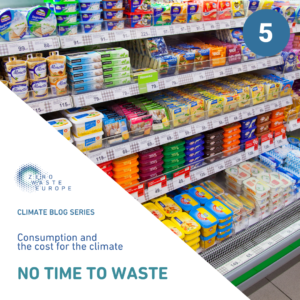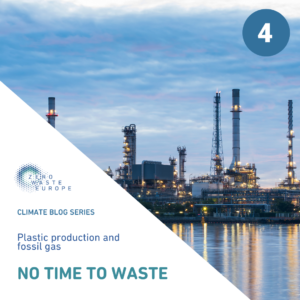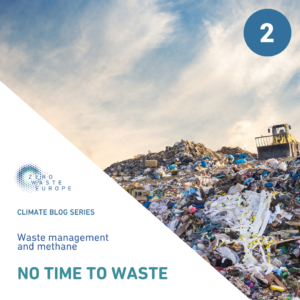No Time To Waste: Plastic Pollution and the Climate Crisis

Single-use plastics are everywhere, invading supermarkets shelves but also the most remote places of our Earth. Half of all plastic produced is designed to be used only once, with packaging currently being the largest market for these single-use plastics. These throwaway plastics are wasting resources, polluting our environment and contributing to the climate crisis.
Plastic Pollution
These plastics are problematic not only because they constitute a considerable waste stream that ends up being landfilled or incinerated, but because they often end up in the natural environment. Single-use plastics are amongst the most commonly found items on our Earth’s beaches and oceans. In fact, 80% of all European beach litter is plastic and 8,000,000 tonnes of plastic end up in the world’s oceans every single year! Not only does this plastic waste have devastating impacts on wildlife through accidental ingestion or entanglement, but the chemicals in this plastic are prone to leakage. These chemicals contaminate all areas of the environment (air, water, and soil), accumulate in food chains, and release toxic additives or concentrate additional toxic chemicals in the environment, making them available for direct or indirect human exposure.
Those are just the plastics we can see! Tiny plastic parts, known as microplastics, are also finding their way into our water systems with over 236,000 ingestible microplastics discarded in the ocean annually. While 167,000 tonnes of plastic pellets enter the environment every year, making these plastic building blocks another huge source of ocean and beach pollution – particularly near industrial plastic sites.
Plastic pollution has an undoubtedly large impact on our natural environment, but it’s contributing to exacerbated climate change too!
Plastic Pollution & Climate
Our oceans are the largest natural carbon sink our planet has – they literally suck greenhouse gases out the atmosphere! Yet, plastics polluting the ocean are choking our seas and reducing their ability to act as carbon sinks. Instead, sunlight is heating up the plastic and causing powerful greenhouse gases to be released into the oceans and atmosphere – reversing the healing power of the ocean!
Smaller plastics (whether they are coming from the degradation of larger plastics or microplastics directly added to products) are up to no good either – microplastics unwillingly ingested by plankton could have a huge impact on our Earth’s health. These tiny micro-organisms are responsible for sequestering carbon deep into the ocean and have been doing just that for thousands of years – if microplastics threaten these populations this will exacerbate runaway climate change even further.
Plastic has impacted all along the value chain – from production to consumption, to pollution in the environment. More on this in blog number 4…
No Time To Waste
Plastic pollution is clearly creating significant environmental damage to our Earth – not only visibly, but invisibly too. We need to turn off the tap by reducing the production of virgin plastics, redesigning products, and incentivising reuse systems like deposit return schemes.
Until we rethink our relationship with plastic we will never break free from it – but the solutions to plastic pollution exist. Tackling climate change means taking on plastics, and not just how they are disposed of, but how they are produced too. Find out more about plastic production and climate change in our next blog.
Discover more about our work on plastics on the Rethink Plastic alliance and Break Free From Plastic webpages.
Read more about the impact of plastic on our climate: here.


